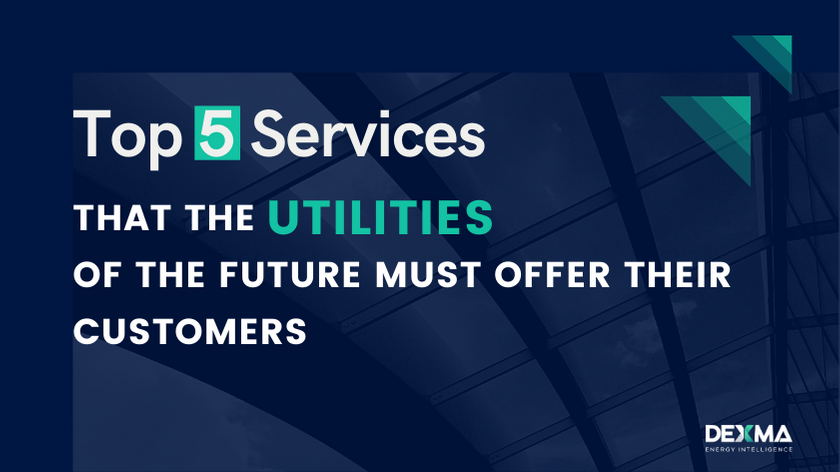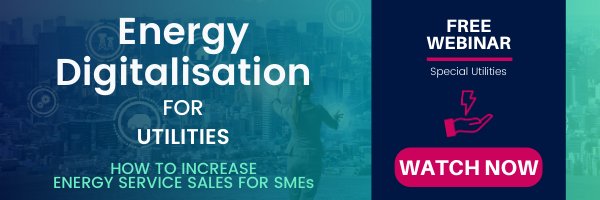Digitalisation opens up an unparalleled opportunity in the world of energy trading to improve the energy products offered conventionally, and to create new solutions and business models strongly linked to digital technology.
We are at a time in the sector when it is no longer enough to rely on yesterday’s typical products and services (flat rates, maintenance services, etc.). Customers, and especially Business-to-Business (B2B, also known as non-residential) customers, expect to find an energy supplier that offers a complete service that not only meets the needs they may have today, but also those that may arise tomorrow (energy efficiency regulations, audits, corporate image, energy transition, etc.).
A new era has begun, marked by the access, use and possibility to analyse large amounts of data provided by intelligent meters, and available to the vast majority of B2B clients, as well as the digitalisation of communication channels with clients.
In a similar way to the banking or telecommunications sectors, B2B energy clients expect to be contacted by their sales representatives through different online channels enabled by new technologies, providing experiences that allow an easy use of all this information and the provision of a more personalised service.
In this context, it is necessary to pay special attention to B2B clients such as SMEs, which, unlike large industrial consumers, do not have specialised energy managers. It is in these cases that the customers need the advice of their trusted supplier, who will contact them not only to “send them the bill” or to solve a “payment incident”, but also to become their personalised advisor to help them save energy and have a quality supply.
With DEXMA’s market vision and our experience in working with utilities in the main European countries, we have set out the TOP 5 services that the utilities of the future should add to their catalogue of solutions:
1. Self-consumption solutions
Utilities are in a privileged position to study the consumption profile of the end customer, the characteristics of their buildings or installations, and to estimate the potential savings and return on investment in self-consumption photovoltaic systems.
Thanks to their knowledge of the end customer, utility companies are the best sales channel for this type of solution, offering turnkey projects that the customer can validate and accept at the click of a button to start benefiting from photovoltaic technology. The support in digital solutions such as Solar Energy Management, will be key in the scalability of sales, and data collection to ensure the best after-sales service.
Energy storage systems: as a perfect complement to self-consumption, energy storage systems can represent a great opportunity in the energy services market.
These systems, whose cost is continuously improving thanks to the growth in the global demand for storage solutions (due to the increase in electric cars or existing batteries in consumer electronics), will allow an increase in self-consumption ratios, as well as guaranteeing the energy supply in the event of cuts in the network, and the purchase of energy in off-peak periods.
The return on investment in this technology depends strongly on the regulatory framework of each country, but we see that its trend is positive and promising over the next few years.
2. Electric mobility
As electricity suppliers, customers expect their utilities to provide them with offers for recharge systems, special recharge rates, and/or vehicle financing (small and large), which will allow them to save energy on their daily journeys, while reducing their environmental impact – especially in urban areas. In addition, electric mobility is a key element in the energy mix of the future.
At the end of the day, electric vehicles can be considered as “a battery with wheels”, so we can expect them to be a good complement to self-consumption (recharging batteries with solar power surplus), and discharging their batteries at peak times or when there is a power cut. This interesting world has a name, and it is called “vehicle-to-grid“.
3. Energy efficiency
Utilities must take advantage of their reference position in everything related to their customers’ energy needs, and seize the market opportunity that presents the greatest concern and environmental awareness of their customers.
Although the terms “energy trading” and “energy efficiency” may seem contradictory, the sale of energy efficiency services by utilities has been a reality for years. The lower energy sales are thus compensated by the generation of income from services which, in addition to presenting much more interesting margins than the sale of kWh, increases customers satisfaction and therefore their loyalty.
Among the possible services to offer, there are energy audits which can be accompanied by digital virtual audit services such as DEXMA Detect, and in this way help not only to save energy, but also to comply with current regulations on energy audits (such as the European Energy Efficiency Directive).
Another point to tackle is the sale of technological solutions to save energy for higher consumption, such as air conditioning (with control systems and renewal of heat pump equipment) or lighting (through LED technology and associated regulation systems). To this end, digital tools that allow these consumptions to be detected and analysed will play a central role in the process of becoming the energy managers of the customers.
4. Optimisation of energy-supply contract
A “divide and conquer” strategy is often a good recipe to overcome business challenges, and in the world of energy efficiency it is no exception. In this case, it would involve designing a solution and breaking it down into small, easily achievable steps, starting with the simplest: optimising what has a direct impact on the energy bill.
For the client, it only means benefits: quick to implement, and without the need for investment.
A clear example of this is rendering continuous and proactive advisory about the tariffs that best adapt to the consumption profile of the clients. This will result in more satisfied customers, as well as a higher retention rate.
Another example is that of contracted power, that must be reviewed annually to deal with changes in consumption, in the use of the customer’s facilities, and which can easily lead to considerable and easily achievable savings. Tariff and power optimisation will play a key role in the future to better respond to climate change new regulations worldwide. This is actually the case for customers who are penalised for reactive energy.
The utility will have to carry out a study of the origin and quantity of reactive energy and provide solutions in the form of suitable devices, such as the most appropriate capacitor banks that respond to their needs.
5. IoT solutions for consumption analysis
In a world where access to information is increasingly important, the possibility of offering tools to clients that allow them to know their energy consumption in detail is a key and central element in the services portfolio that utilities can offer.
The monitoring of the main energy consumption variables is mandatory to control the energy over-cost. To this end, the installation of data collection systems based on IoT is essential, as well as the use of the distributors’ intelligent meters infrastructure. In this sense, initiatives such as the Energy Data Access Alliance or Datadis will in the future make it possible to facilitate access to this data and thus, feed analysis tools that offer cost control and the reduction of consumers’ environmental footprint.
In addition to the IoT, what will we see in the future? Demand Response, which consists of enabling customers to benefit from digital automation solutions that allow them to actively manage the consumption, storage and generation of energy. Through this large-scale domotics, the customer will be able to save costs (by displacing consumption to off-peak hours or maximising self-consumption during hours of higher solar production).
In the future, he/she will also be able to participate in the new flexibility markets, where it is expected that customers with the capacity to modify their consumption curve will receive payment from the electricity system, in a similar way to the interruptibility system currently available for industrial customers. As an example, see the Respond project in which DEXMA is collaborating with companies such as Fenie Energía (Spain) o Aura Energi (Denmark).
These are just a few examples of the opportunities that utilities can find in the digital transformation. All of them, in turn, are leading to an increase in loyalty due to greater customer satisfaction, as well as an increase in invoicing of services. At DEXMA, during the last 10 years we had never seen so much activity in the sector. We are convinced that we are witnessing a transition in the world of the utilities: from a pure supplier to a provider of advanced energy services.






